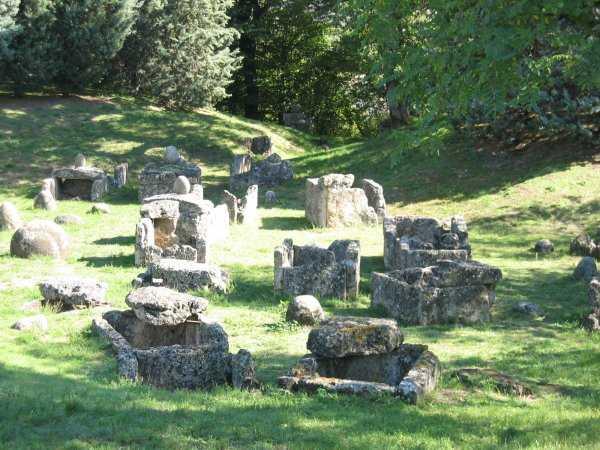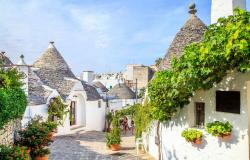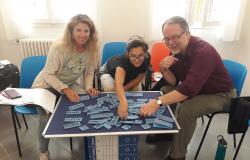The Etruscans in Emilia-Romagna: Kainua (Marzabotto)
ITA:

Use player to listen to Italian version
A classic school field trip destination for Bolognese students is Marzabotto, or Kainua, the Etruscan name of the city that was founded in the early 5th century B.C. in the valley of the Reno river, 27 kilometers southwest of Bologna (which was also Etruscan early on and known as Felsina).
Destroyed by the Gauls in the 4th century BC, Kainua was not rediscovered until the 19th century, when the town’s layout, with remains of streets and house foundations, of the acropolis and necropolis and several artifacts were found.
Kainua became one of the major Etruscan towns outside of what is traditionally considered ‘Etruria,’ an area that comprises parts of Tuscany, Lazio and Umbria, where the Etruscans lived. It amazes for the regularity of its orthogonal plan, with 15m-wide north-south oriented roads intersecting with narrower 5m-wide east-west oriented roads. These streets divided the city into blocks where similar houses were built, along with larger buildings, perhaps warehouses.
Inside many houses traces of metallurgical activities were found, so that researchers thought the town was inhabited almost entirely by blacksmiths. Many furnaces were also discovered, which pointed to a flourishing clay production.
The acropolis was built on top of a hill that overlooked the city; there were temples, altars and sacred places. The two necropolis, as in all Etruscan settlements, were placed out of town and equipped with doors, as if to symbolize the passage between the world of the living and the world of the dead.
Within the archeological site you’ll also find the National Etruscan Museum “Pompeo Aria”, where many of the artifacts found are on display.
For anyone with a love of archeology and an interest in the fascinating civilization of the Etruscans, a visit to Kainua is a must side trip from Bologna.
Una destinazione classica per gli studenti bolognesi in gita è Marzabotto, o Kainua, il nome etrusco della città fondata all’inizio del V° secolo a.C. nella valle del fiume Reno, 27 chilometri a sud-ovest di Bologna (anch’essa originariamente etrusca e conosciuta con il nome di Felsina).
Distrutta dai Galli nel IV° secolo, Kainua non fu riscoperta fino al XIX° secolo, quando venne alla luce la struttura della città, e con essa le fondamenta delle case, i resti di strade, dell’acropoli e delle necropoli, e antichi manufatti.
Kainua divenne una delle principali città etrusche al di fuori di quella che è tradizionalmente considerata “Etruria”, l’area che comprende parti di Toscana, Lazio e Umbria, dove vivevano gli Etruschi. Sorprende per la regolarità del suo piano ortogonale, con strade larghe 15 metri orientate nord-sud che intersecano strade più strette, di 5 m, orientate est-ovest. Queste strade dividevano la città in isolati, dove si trovavano case simili tra loro, insieme a edifici più grandi, forse magazzini.
All'interno di molte case sono state trovate tracce di attività metallurgiche, tanto che gli studiosi pensano che la città fosse abitata quasi interamente da fabbri. Sono state scoperte anche molte fornaci, a indicazione di una intensa lavorazione dell’argilla.
L'acropoli fu costruita sulla cima di una collina che dominava la città; c'erano templi, altari e luoghi sacri. Le due necropoli, come in tutti gli insediamenti etruschi, furono poste fuori dalla città e dotate di porte, a simboleggiare il passaggio tra il mondo dei vivi e quello dei morti.
All'interno del sito archeologico c’è anche il Museo Etrusco Nazionale “Pompeo Aria”, dove sono esposti molti dei manufatti rinvenuti.
Una visita a Kainua rappresenta un’escursione da fare dalla città di Bologna per chiunque ami l'archeologia o sia interessato all'affascinante civiltà degli Etruschi.











